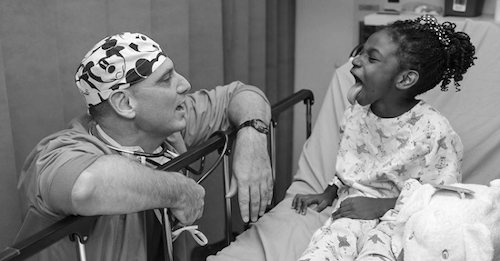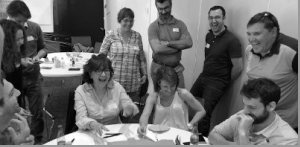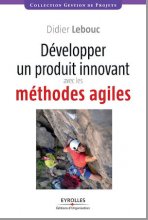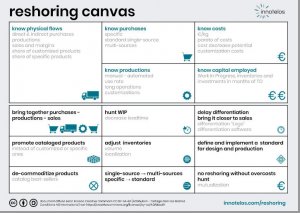Anne Munchenbach shows how, in health, agility reconciles quality of care, staff satisfaction and economic efficiency.
Her proposals stem from her complementary management experience in manufacturing and healthcare.

Dissatisfied patients and professionals
Health sector organizations have a long history of employing tried and tested methods originating in manufacturing.
Hence, many institutions have introduced ISO 9001 certification, i.e. standardised, controlled processes for dealing with quality management.
In more recent times, lean management, rebaptised lean healthcare has been introduced to achieve productive outcomes.
This often consists in precisely mapping out processes and automating them as much as possible. In this way, needless work and waste are eliminated.
However, almost all healthcare stakeholders are dissatisfied with these resulting changes and work conditions:
Workloads seen as excessively heavy, resulting in staff drop-outs.
Consequent frustration due to insufficient time to care for the patient.
A perception of growing “silo structuring”, restricting each person to his area of speciality.
In particular, the widening gap between doctors and “non-doctors”.
Very limited multidisciplinary work, owing to lack of time and complex silo structures.
Medical organizations often led by managers with no caregiving experience.
Friction and opposition between these two camps.

Agility: 3 simple principles to act in complex situations
Agility is prevalent in companies.
Consequently, almost all IT projects are conducted with methodologies, and even frameworks, referred to as “agile”.
However, agility has its origins in bricks and mortar: it emerged in the 1980s/1990s in construction and public works projects.
Far more than a methodology, agility is first and foremost a mindset built on 3 simple principles, enabling easier management of complex situations and uncertainty:
obsession with the customer
confidence in the team's ability to self-organize
embracing incertitude and being able to capitalise on it
When applied in a climate of friendly collaboration and encouraged at the highest level, these 3 principles unquestionably lead to success, for the customers as well as for the employees and the company.
The symbols and jargon associated with agility (post-its, scrums, sprints, retrospectives, velocity...) are not essential.
These are simply tools which in certain, usually IT-related, contexts facilitate implementation of the 3 agile principles.

Health and agility are compatible
The 3 agile principles lend themselves to healthcare.
1) Obsession with the patient
The parallel of the customer in the case of a company is without doubt the patient, the person to be looked after.
Each individual in healthcare - from manager to orderly, professor to midwife, technician to nurse - can get caught up in this obsession with curing the patient, and ensuring his safety and wellbeing.
This is a normal objective for everyone. What's more, unlike company profit, it is an indisputable one.
In manufacturing, the leaders of the most efficient agile teams make sure that each team member knows the customers and takes an interest in them.
All roles are involved: marketers as well as engineers, technicians, manufacturers, suppliers, producers, communications professionals, finance persons...
Meeting clients, ideally to get a feel for their daily lives, gives each person a practical, visible sense of why, or to be more precise, for exactly whom, he is working.
Varied, complementary approaches to clients spark confrontations, sometimes very sharp ones.
Yet, when team atmosphere is friendly, these exchanges limit misunderstandings and result in novel action.
I had the opportunity to handle such productive confrontations in a healthcare network for disabled children from the Grenoble area.
Open discussions, without the presence of a management chain, led to recognition at an individual level of not just the diversity of these approaches, but their complementarity as well.
The team gradually came up with customized support measures appropriate for each child.
Healthcare organizations, with their multi-layered, sometimes indirect, management structures rarely produce productive confrontation stemming from divergent points of view on patients.
Bringing about a change in attitudes and behaviours is onerous and is often met with much resistance.
However, once established, this mindset becomes widespread, among caregivers as well as patients and their relations.

2) Confidence is the best hospital-acquired disease
The self-confidence of a care team is contagious.
It is spontaneously passed on to patients, whose chances of recovery are enhanced as a consequence.
Confidence is also a pre-requisite of self-organization.
A team's ability to change position and reorganize without descending into disarray is the best corrective to unforeseen medical situations.
Team self-organization can be facilitated with the use of a few very simple planning tools, adapted to the particular healthcare context in each case.
The team collectively determines the “tasks to be performed” for each patient and allocates them among its members based on patient requirement and relevance.
This preparatory group work eliminates the bulk of difficulties.
Any remaining problem areas are few and clearly defined. This makes for easier arbitration by leaders who now have more time at their disposal to share their thoughts with the care team.
3) Uncertainty is vital
Uncertainty is even more prevalent in medicine than in manufacturing.
Proof of this is the use of the word prognosis, which is a much more apt term when referring to expectations for the evolution of a patient's condition.
But, in healthcare as in manufacturing, not everything has to do with uncertainty.
Many pathologies can be predicted over a given period and there are many tried and tested protocols.
Distinguishing the period of quasi-certainty is key in agility.
Within this necessarily short time horizon - which IT specialists oddly refer to as “sprint” - the action to be taken is based on pre-existing processes, familiar to the team.
In this way, attention can be collectively focused on any deviations, which with early detection and team self-organization, are rendered more manageable.
Furthermore, as time goes on, the team regularly adjusts its objectives and actions for each of its patients.

Collaboration with the patient in mind
A shared feature of agility and lean health is dependence on care teams and their collective know-how.
Lean health has to do with seeking to make processes efficient and repeatable.
This is an ideal approach for the most predictable features of health organizations.
For example, an X-Ray department, instead of having all patients seen at the same time, can stagger its appointments.
In addition, it can determine waiting times and have them visually displayed.
Furthermore, grouping together similar types of examinations avoids what is referred to by manufacturers as “batch changes” and makes for smoother flow of operations.
Agility is first and foremost the management of uncertainty by a self-organized collective.
So it is particularly effective in areas where pathologies are varied, complex or progressive.
Let us take, for example, the healthcare network which I coordinated.
It caters to children with rare syndromes and multiple “dys” difficulties: dyspraxia, dyslexia...
In a conventional care scenario, a dyslexic child is treated primarily by a speech therapist.
In this network, the child is first admitted and examined by several professionals: a speech therapist as well as an orthoptist, a psychologist, a psychomotor therapist, a physiotherapist and a paediatrician.
All of these caregivers, along with the school teacher and parents, present their points of view supported by the assessments carried out.
Each treatment is then converted into a care blend appropriate for the child, by decision of the collective.
Speech therapy is still important, but by adding orthoptics and psychomotor therapy, more rapid, longer-term results can be achieved.
The benefits to the child are undeniable.
The caregivers in this healthcare network improve their treatment efficiency.
By sharing knowledge and methods, as a group, while working on actual cases, each person expands his expertise and is open to opportunities in other areas of practice.
Moreover, this private healthcare network, therefore based on self-organization, had to evaluate its economic costs.
It proved to be more "competitive” than conventional health management.
In most cases, cost reductions of at least 35% were noted.
This productivity is an unexpected and happy consequence of better management of children with complex disabilities.

A beneficial side-effect: cost reduction
Lean health is a major advancement since it optimises defined medical processes.
Agile health goes even further.
Because of its very human face, agile health enables innovations to be tailored as closely as possibly to each patient and his particular situation.
To the full satisfaction of patients as well as all caregivers.
And the economic productivity is the budgetary icing on this vitamin A cake!
|
|
|
glossary
Dyslexia: reading disorder.
Dyspraxia: difficulty in automatically executing pre-determined movements, with no existing paralysis.
This includes difficulty finding one's bearings in space, difficulty carrying out simply daily actions, writing difficulties (dysgraphia), speech disorders (dysphasia).
Healthcare network: in France, a public funded health organization of private medical & paramedical professionals alonside with social workers.
Usually, a healthcare network takes care of patients with a particular set of pathologies.
Lean: lean manufacturing is a school of thought relating to plant-floor organization.
Lean is inspired by Toyota's production methods, which are themselves inherited from practices implemented in the munitions industry in the USA during the second world war.
Lean manufacturing was popularized by a book on the 1980s worldwide automotive industry, written by James Womack, Daniel Jones and Daniel Roos, "The Machine That Changed The World", published in 1990.
Orthoptics: the evaluation and rehabilitation of motor, sensory and functional visual disorders.
Speech therapy: the evaluation and rehabilitation of communication disorders linked to the voice, speech and oral and written language.
Psychomotor therapy: rehabilitation through body harmony.
Psychomotor therapy combines body expression, gestural education, coordination activities, rhythm...
Scrum: agile organization very commonly applied in information technology.
Scrum is a term used in rugby. In fact, "agile scrum" uses part of the organizational principles of a rugby team in a championship competition.
Sprint (or iteration): a short repetitive time interval (usually 2 to 4 weeks) during which an agile project team (for example, an agile scrum) designs, produces, tests and delivers new functionalities.
references
agility
Publications in English of innotelos about agility and project management
lean health
Going Lean in Health Care - IHI White Paper (Institute for Healthcare Improvement) 2015
lean manufacturing
Book by James Womack, Daniel Jones and Daniel Roos, "The Machine That Changed The World" (1990)
Anne Munchenbach - innotelos | vitamins for innovation - January 2018
This text written (but not images) is distributed according to Creative Commons Licence Attribution - Attribution-NonCommercial-ShareAlike 4.0 International (CC BY-NC-SA 4.0). For any other use, please contact innotelos.

credits for images:
stethoscope & fruits at top the page Artfully Photographer / Shutterstock (licence Shutterstock)
licences for other images please refer to site credits






